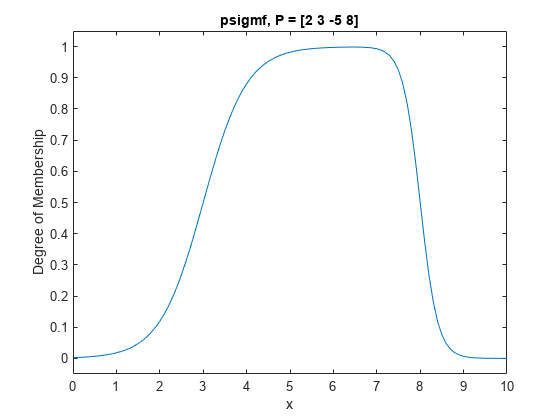psigmf
Product of two sigmoidal membership functions
Syntax
Description
This function computes fuzzy membership values using the product of two sigmoidal
membership functions. You can also compute this membership function using a
fismf object. For more information, see fismf Object.
This membership function is related to the sigmf
and dsigmf membership functions.
y = psigmf(x,params)
To define the membership function parameters, specify params as the
vector [a1
c1
a2
c2].
Membership values are computed for each input value in x.
Examples
Input Arguments
Output Arguments
Alternative Functionality
fismf Object
You can create and evaluate a fismf object that
implements the psigmf membership function.
mf = fismf("psigmf",P);
Y = evalmf(mf,X);Here, X, P, and Y correspond to
the x, params, and y
arguments of psigmf, respectively.

